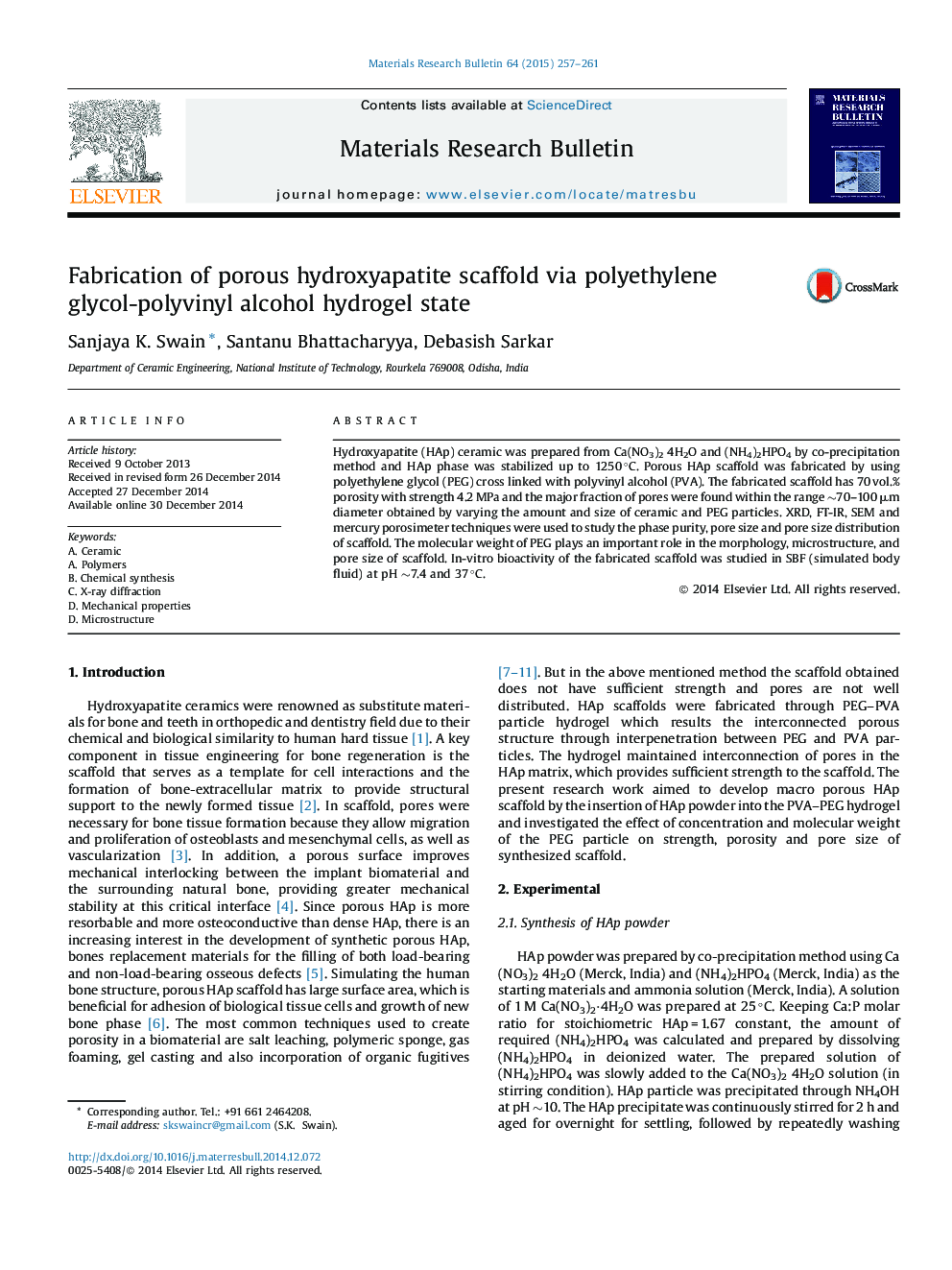| کد مقاله | کد نشریه | سال انتشار | مقاله انگلیسی | نسخه تمام متن |
|---|---|---|---|---|
| 1487595 | 1510711 | 2015 | 5 صفحه PDF | دانلود رایگان |
• High strength macroporous HAp scaffold fabricated via PEG–PVA hydrogel.
• HAp scaffold has 70 vol.% porosity, pore diameter ∼100 μm and strength ∼4.2 MPa.
• The hydrogel results due to molecular interpenetration between PEG–PVA.
• Weight of PEG plays vital rule for developing porosity in HAp matrix.
Hydroxyapatite (HAp) ceramic was prepared from Ca(NO3)2 4H2O and (NH4)2HPO4 by co-precipitation method and HAp phase was stabilized up to 1250 °C. Porous HAp scaffold was fabricated by using polyethylene glycol (PEG) cross linked with polyvinyl alcohol (PVA). The fabricated scaffold has 70 vol.% porosity with strength 4.2 MPa and the major fraction of pores were found within the range ∼70–100 μm diameter obtained by varying the amount and size of ceramic and PEG particles. XRD, FT-IR, SEM and mercury porosimeter techniques were used to study the phase purity, pore size and pore size distribution of scaffold. The molecular weight of PEG plays an important role in the morphology, microstructure, and pore size of scaffold. In-vitro bioactivity of the fabricated scaffold was studied in SBF (simulated body fluid) at pH ∼7.4 and 37 °C.
Figure optionsDownload as PowerPoint slide
Journal: Materials Research Bulletin - Volume 64, April 2015, Pages 257–261
